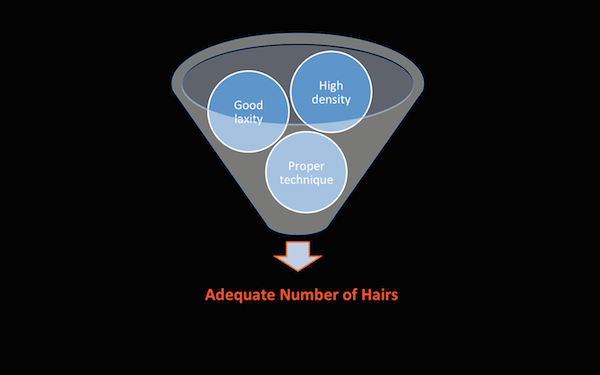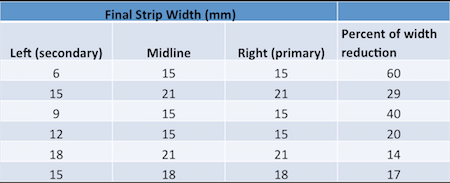Increasing the Safety of Strip Hair Transplantation in Hair Transplants with Large Graft Numbers
Introduction:
 In the last decade, we have witnessed significant improvement in the quality of hair restoration surgery along with the quantity of follicular unit grafts that are able to be harvested and transplanted in one hair transplant session. There is an obvious trend with both hair loss patients and hair transplant surgeons becoming more aggressive at removing high hair graft numbers and restoring larger areas of balding in fewer hair restoration sessions. We will discuss the methods of increasing the number of available grafts without jeopardizing the safety of patients.
In the last decade, we have witnessed significant improvement in the quality of hair restoration surgery along with the quantity of follicular unit grafts that are able to be harvested and transplanted in one hair transplant session. There is an obvious trend with both hair loss patients and hair transplant surgeons becoming more aggressive at removing high hair graft numbers and restoring larger areas of balding in fewer hair restoration sessions. We will discuss the methods of increasing the number of available grafts without jeopardizing the safety of patients.
Laxometer and its use as a metric system for determining scalp laxity before hair transplant procedures was presented before. Now, we are using the Laxometer as an intra-operative tool to predict risks of increased closure tension on donor wound edges, as well as to formulate safe sized donor strips for hair transplant surgeons. Other techniques of preparation for the donor area before hair transplantation and methods used to minimize the risks of donor complication during a hair transplant surgery will also be discussed.
Method:
 In order to enable patients to receive the maximum number of grafts without risking donor complications, a series of factors should be utilized. Scalp exercises are documented and considered to be an effective method in increasing the laxity of scalp before hair transplant surgery. We will discuss the optimum methods of scalp exercise before hair transplant surgery. The use of Laxometer during consultation and intra-operatively will also be discussed. We will review the results of our sequential strip removal technique study in minimizing the post operative complications. New and emerging methods such as scalp fenestration using combined FUE and strip methods for the optimization of the number of grafts will also be explored. Proper closure techniques with larger strips for higher graft yield will also be discussed.
In order to enable patients to receive the maximum number of grafts without risking donor complications, a series of factors should be utilized. Scalp exercises are documented and considered to be an effective method in increasing the laxity of scalp before hair transplant surgery. We will discuss the optimum methods of scalp exercise before hair transplant surgery. The use of Laxometer during consultation and intra-operatively will also be discussed. We will review the results of our sequential strip removal technique study in minimizing the post operative complications. New and emerging methods such as scalp fenestration using combined FUE and strip methods for the optimization of the number of grafts will also be explored. Proper closure techniques with larger strips for higher graft yield will also be discussed.
Conclusion:
We will discuss a series of simple, yet practical techniques able to be used before and during a hair transplant surgery to optimize the number of grafts thus extent of restored area. Using these outlined techniques can minimize the number of needed hair transplants while increasing both patient and surgeon satisfaction.
This publication was presented by Dr. Parsa Mohebi at the International Society of Hair Restoration Surgeries 17th Annual Live Hair Transplant Surgery Workshop in Orlando, Florida.